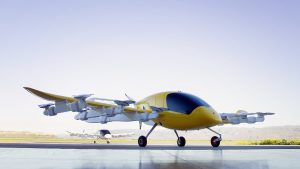For anyone who might be concerned about the future of electric vehicle charging after Tesla’s news this week, here’s some good news about other big players in the space. Electrify America’s DC fast charging network in North America experienced significant growth in 2023, as the number of charging sessions and dispensed energy more than doubled year-over-year.
— Read on insideevs.com/news/718270/electrify-america-2023-charging-stats/
Autel Energy | Full Product Lineup
Residential AC Commercial DC Commercial DC Fast Learn More AC Elite Home Level 2 Electric Vehicle Charger The Autel MaxiCharger AC Elite Home makes charging your EV easy. Combining easy installation and an app to control it all from your smartphone, it will integrate perfectly into your home. FAST HOME AC CHARGING CHAR
— Read on autelenergy.us/pages/autel-energy-full-product-lineup
Uber self-driving car kills pedestrian
It was inevitable that eventually, someone’s self-driving car would be in an accident involving a pedestrian…and a 49 year old woman in Tempe, AZ, pushing her bike across the street, was the first victim. While the car was one of Uber’s, it really could have happened to any of the tech companies. Details are still scarce as the investigation continues, but it’s safe to say that the car stored massive amounts of data that will make for a quick conclusion.
Cora – commercial drone taxi service, from Kitty Hawk
 Startup Kitty Hawk unveiled their autonomous flying taxi, called Cora. Designed to be a self-piloted, electric-powered, passenger-carrying drone service, the business model is hardly new, but their approach to the technology is. They’re combining a traditional aircraft with pusher prop and wings, with a multi-rotor (12, to be precise) drone-like configuration for vertical thrust, allowing true vertical takeoffs and landings. No word on when you’ll be able to get a ride in one, but considering they have a flying prototype and financial backing from Larry Page, it’s a matter of getting the software right, and finding a way to certify this for use in the various countries (they’re starting out in New Zealand for precisely that reason, the country is more business-friendly for technologies like this).
Startup Kitty Hawk unveiled their autonomous flying taxi, called Cora. Designed to be a self-piloted, electric-powered, passenger-carrying drone service, the business model is hardly new, but their approach to the technology is. They’re combining a traditional aircraft with pusher prop and wings, with a multi-rotor (12, to be precise) drone-like configuration for vertical thrust, allowing true vertical takeoffs and landings. No word on when you’ll be able to get a ride in one, but considering they have a flying prototype and financial backing from Larry Page, it’s a matter of getting the software right, and finding a way to certify this for use in the various countries (they’re starting out in New Zealand for precisely that reason, the country is more business-friendly for technologies like this).
As a quick side note…if you check out their website, note they did something clever with the scrolling..you scroll UP, not down like every other page on the internet. Nice tie-in with their technology and slogan (“things are looking up”).
The end of the road for the internal combustion automobile engine
The days of gas-powered cars are numbered. Sure, electric cars are cool and promising and are gaining in popularity worldwide, but an announcement by Volvo really helps make clear the powertrain of the future. As reported by MotorAuthority, Volvo is no longer working on any next generation gasoline powered engines. This doesn’t mean they’ll stop SELLING them any time soon…the current generation can last quite some time, I’m sure. But they’re looking ahead, and they apparently don’t see the profit in developing new gas engines, not with the rise of electrics. A big step, really, and one I expect other car companies will emulate. Or…maybe it’s just a publicity stunt? Volvo is owned by Chinese company Geely…so are they making this announcement for the eco-friendly news benefit, while actually planning to switch to Geely engines in the future if electrics haven’t reached the point needed by then?
Also in electric vehicle news…delivery company DHL did the math on Tesla’s new semi truck, and figured they’d break even on it in less than two years, compared to a conventional diesel truck. For large companies that are willing to invest in capital equipment like this, switching their short/mid range fleets to electric is really a no-brainer! It’s only a matter of time, too, before trucks like the Tesla are suitable for long-haul trucking.
